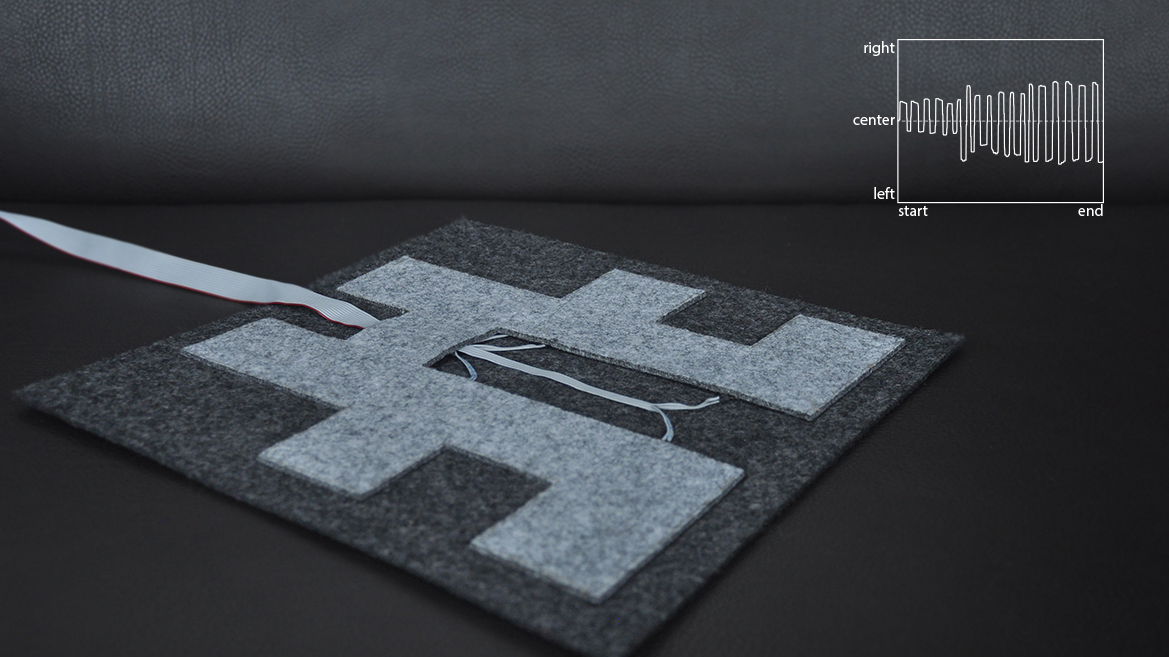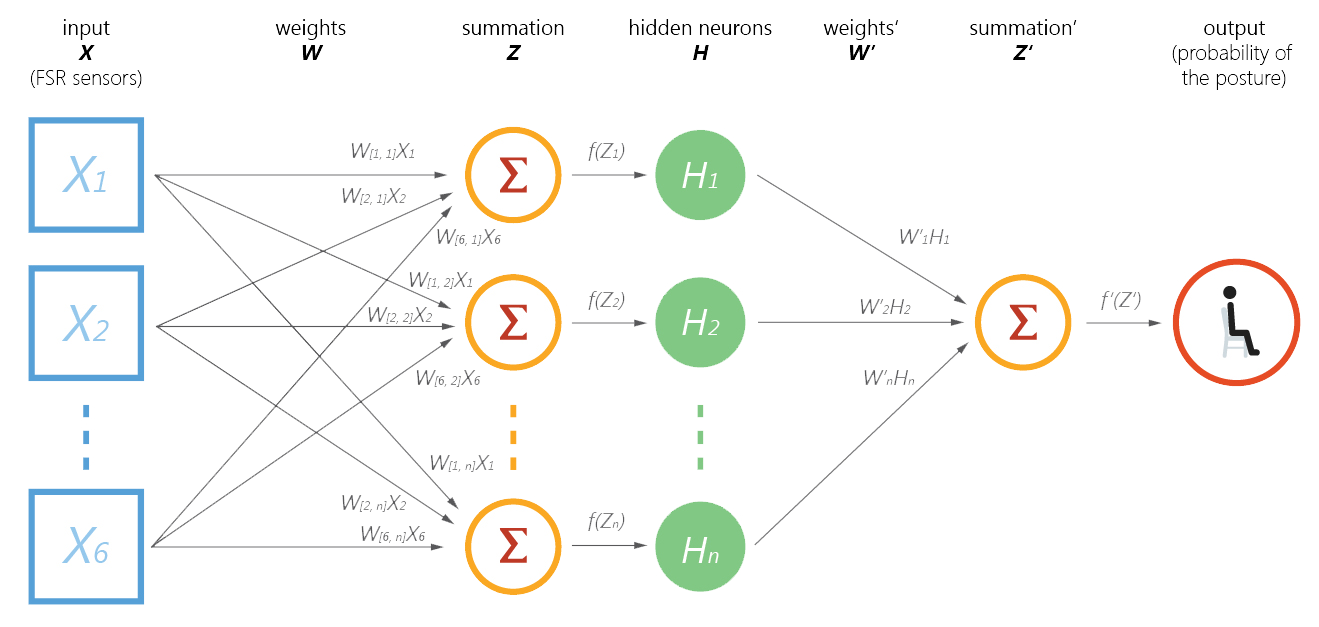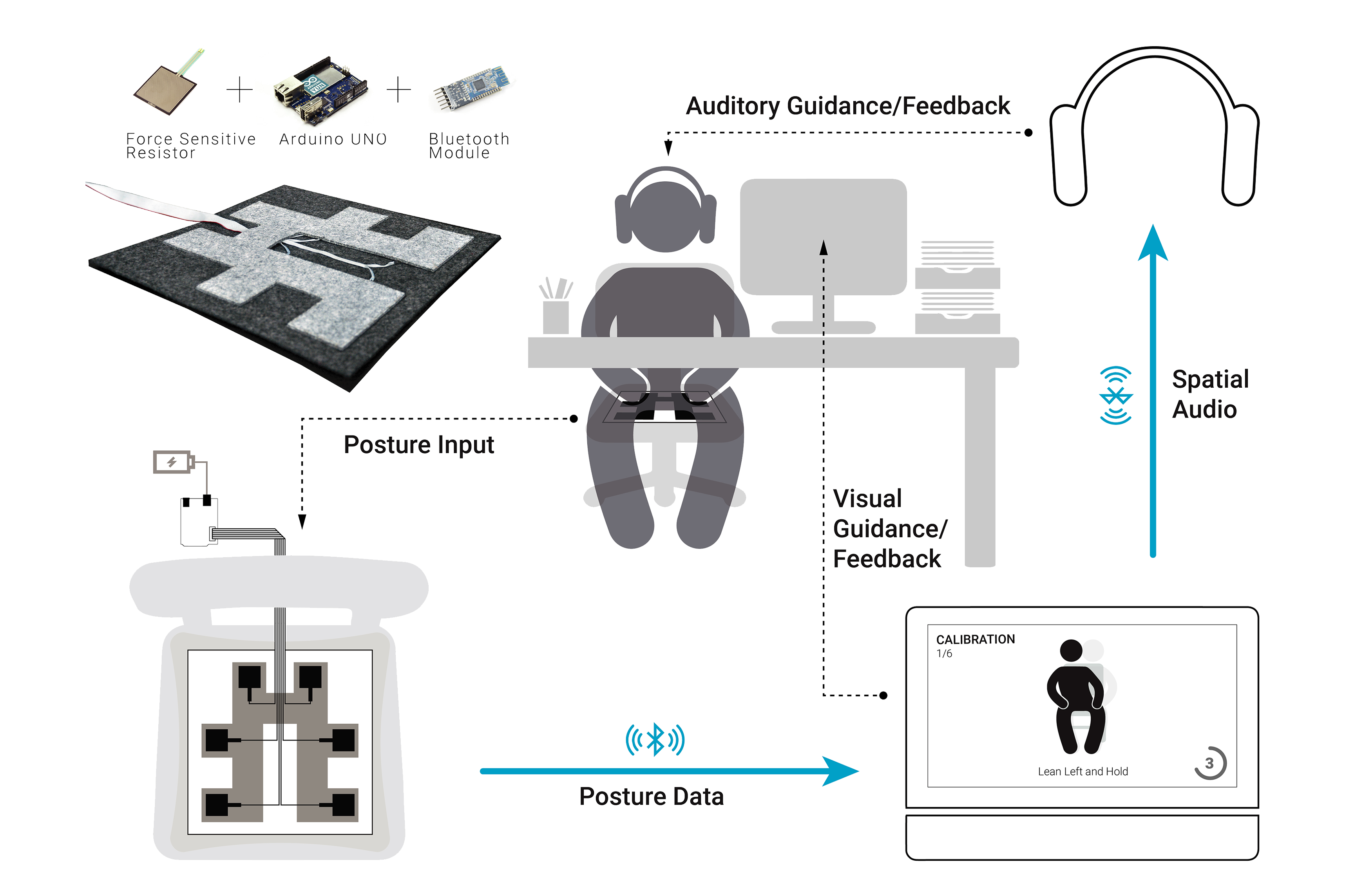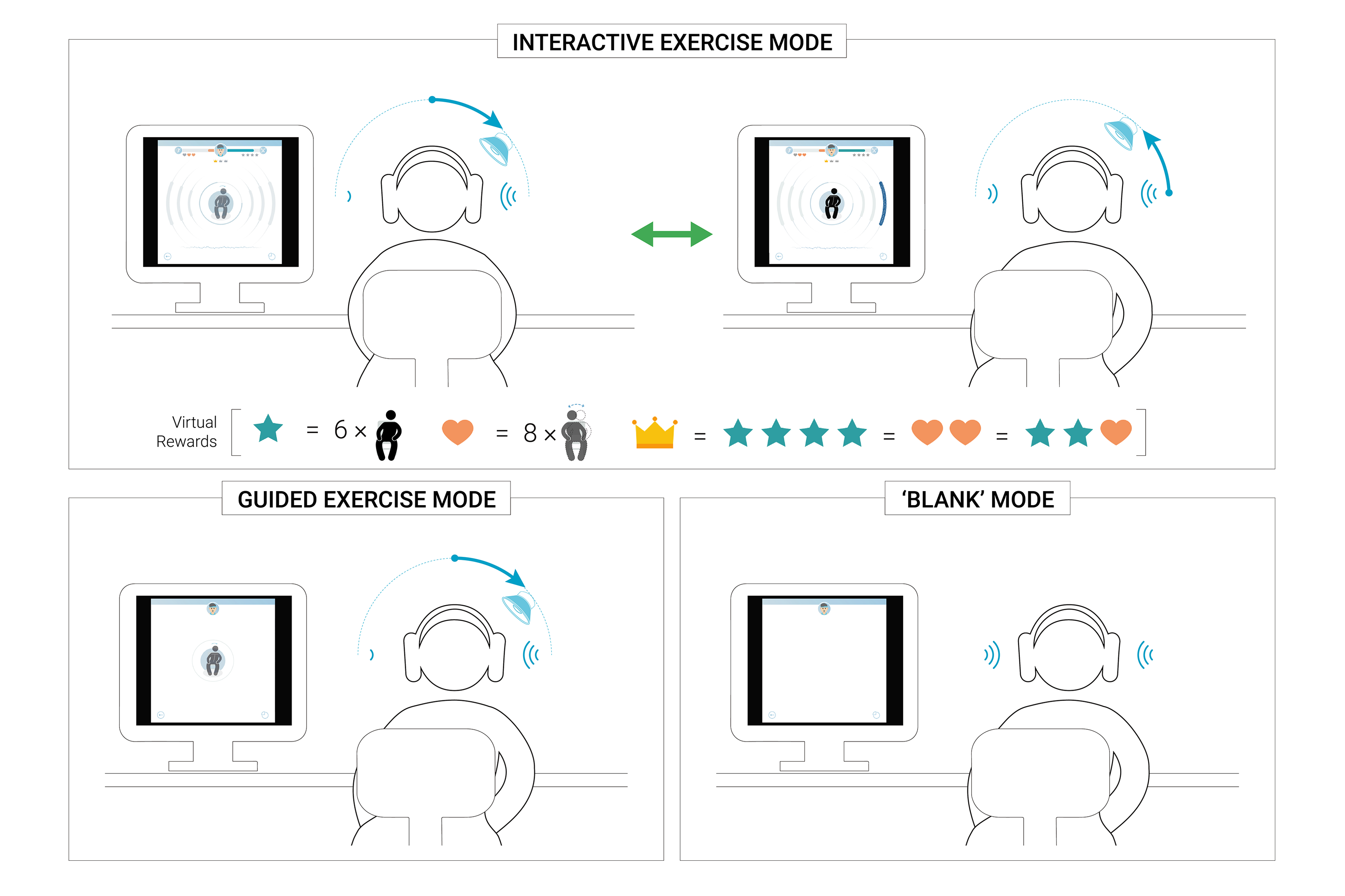
HealthSit embeds with six square-type FSR at specific positions and the sit pad (40x40 cm2) ensures that it fits regular office chairs.

Based on the data from the combination of multiple FSRs, HealthSit applies a specialized artificial neuron network to recognize sitting postures and variances.

HealthSit archives and presents the posture-related information to the user with animated musical feedback to encourage posture dynamics and avoidance of excessive sitting.
As shown in the video, HealthSit facilitates a lower-back stretching exercise that is adapted from this dynamic weight-shifting.

We identified a typical scenario for HealthSit-assisted fitness breaks: Listening to relaxing music while doing the stretching exercise.
Three working modes were implemented: an interaction-aided, a guided, and a self-directed exercise.

HealthSit was evaluated in a within-subject experiment with 30 participants.

Comparisons among the three working modes of HealthSit showed the positive effects of system interactivity in enhancing health, workflow, and emotion.
For more information of the HealthSit project:
Ren, X., Yu, B., Lu, Y., Chen, Y., and Pu, P. HealthSit: designing posture-based interaction to promote exercise during fitness breaks. International Journal of Human–Computer Interaction, 2018. [ pdf ]
Ren, X., Lu, Y., Visser, V., Le, P. H., and van den Burg, R. Interaction matters? exploring interactive music as a reminder to break sedentary office time. In Proceedings of the International Symposium on Automation and Robotics in Construction, ISARC, 2017.